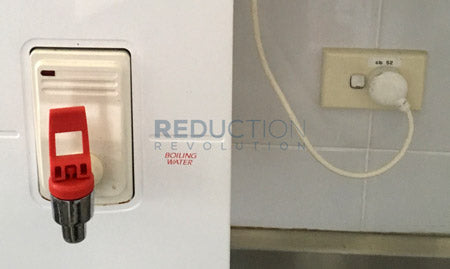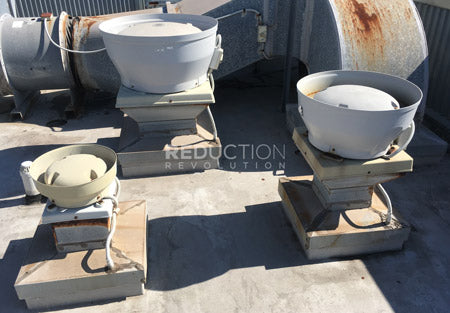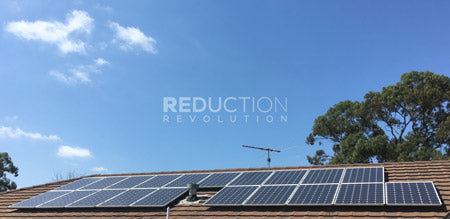Have you ever received a hefty and unexplained electricity bill or gas bill?
It can leave you feeling pretty helpless.
And quite often, the real causes (and solutions) aren't what you expect.
Common Myths About High Energy Bills
Over the years, I've helped thousands of households and businesses unravel their high energy costs. Most people initially think their soaring bills are due to:
- Mystery electricity leaks,
- Faulty appliances,
- Problems with their utility meter,
- Or even a neighbour stealing their power.
While these scenarios are technically possible, they're incredibly rare. In fact, they barely register in my top ten causes outlined below.
The Real Reasons Behind High Power Bills
After completing over 1,000 energy audits across Australia - from small apartments to office buildings and sports clubs - I've discovered that high bills almost always come down to three key areas:
- Genuine high energy use (most likely): Most cases are linked directly to how, when, and what appliances are used. It's just a matter of knowing where to look - more on this below.
- Billing surprises (pretty common): Big increases, errors, estimated readings, winter heating bills, and misunderstood tariffs frequently catch people out.
- Solar panel issues (can happen): From system faults to billing mistakes, even solar can unexpectedly increase bills if you're not vigilant.
Top 10 Causes of High Electricity Bills
1. Ducted Air Conditioning
Ducted AC is the most common culprit in both homes and businesses. As an example, running a typical household ducted system for 5 hours a day could cost over $1,000 a year.

On the 'outdoor unit' of your Air Conditioner, find the compliance plate. In the example pictured above, the unit has an input of 5700W (5.7kW) when cooling and 4700W (4.7kW) when heating.
2. Electric Water Heaters
Hot water use often accounts for around one-third of household energy bills.
3. Other Electric Heaters
Plug-in heaters and in-floor heating, especially when left on overnight, can really add up.

Cheap to buy; expensive to operate. Be careful when using plug-in heaters like these.
4. Ventilation Fans
These often run non-stop in commercial and strata buildings. They're sitting on the roof, unbeknownst to most people, and they can work against your air conditioning.
5. Water Pumps
Pool, spa, and irrigation pumps can (and do) drive up costs. Then there are some less common issues like pond pumps, fish tanks, and hot water reticulation pumps.
6. Refrigeration
Multiple fridges, separate chest freezers, display fridges and commercial cool rooms all exacerbate power use. Commercial premises like pubs and clubs can have very high refrigeration costs.
A practically empty commercial display fridge costing over $1,000 per year to operate.
7. Lighting
Outdated technology, lights left on unnecessarily, or over-spec installations are all energy drains.
8. Estimated Bills
Utility company estimates can result in surprise 'catch-up' bills.

E is for Estimated. And it means you have an essentially meaningless energy bill.
9. Bad Rates
Unfavourable tariffs or not shopping around for better deals is like donating money to your power company.
10. Solar Panel Issues
Lack of monitoring, maintenance problems, or billing errors can undermine your solar savings.
Note: Multiple factors often combine. Most premises with high electricity bills or high gas bills will need to address multiple of the above areas to see the best results.
How to Slash Your Energy Bills: Proven Solutions
1. Tame Your Air Conditioning & Heating
- Seal and insulate your home to reduce reliance on ducted systems.
- Choose energy-efficient split systems and use ceiling fans and portable fans as much as possible.
- Set thermostats wisely (every 1°C adjustment can save 5-10% on heating/cooling costs).
- Try these smart AC controllers for automated savings.
2. Review Your Hot Water Use
- Fix leaks fast and use high-efficiency shower heads and low-flow tap aerator inserts.
- Insulate hot water pipes and reduce the temperature setting if possible.
- Switch off after-hours hot water units, especially in workplaces.
- For pools/spas, use covers and run heating only as long as necessary. Even solar powered water heaters for pools use a lot of electricity thanks to their circulation pumps.

Instant boiling (or chilled) water isn't needed after hours. Switch units off or place them on a timer.
3. Control Plug-In Heaters & Dryers
- Use timers and thermostats - never leave underfloor heating or towel rails running all day.
- Use direct radiant sources of heat - like electric blankets, heated throws, and heat pads.
- Reduce clothes dryer usage where possible (heat pump dryers use much less electricity).
4. Optimise Ventilation Systems
- Upgrade to smart controls (timers, humidity, or carbon-monoxide sensors) so fans run only when needed.
- Consider heat recovery systems for spaces with air conditioning or heating.

Extractor fans for bathrooms, kitchens and car parks are everywhere. You'll see them dotted around the roof of most buildings (as pictured).
5. Audit Your Pumps
- Reduce pool and irrigation pump operation times.
- Choose 'variable speed drive' pumps and install timers where feasible.
6. Consolidate Your Fridges & Freezers
- Use fewer, fuller fridges. Empty fridges waste money.
- Set correct temperatures: around 4°C for fridges, -15°C for freezers.
- For businesses, ensure doors seal well and install strip curtains on cool rooms.
7. Modernise Your Lighting
- Replace all light bulbs with LEDs - they last longer and use up to 90% less energy.
- Install motion sensor lighting in low-use areas.
- Use only as much light as each task requires. See our downlight calculators and how to change a downlight.
8. Watch Out for Estimated Bills
- Check for "E" (estimated) on your bill. When needed, submit your own meter readings.
9. Don't Overpay for Power or Gas
- Compare rates regularly and understand your tariffs. Watch out for seasonal changes and peak demand charges.
- Check for final 'inc GST' rates and pay attention to daily service charges, not just headline discounts.
10. Monitor Your Solar Panels
- Track performance with a dedicated solar energy monitor.
- Read your bills carefully to ensure you're credited for feed-in tariffs and solar exports.
- Brush up on how much your system should produce - don't assume solar covers everything.

Solar panels are awesome. But keep an eye on your system and understand your usage to get maximum benefit.
Ready to Take Control of Your High Energy Bills?
Step 1: Invest in a power meter or wireless energy monitor to see where your power goes in real time.
Step 2: Start making smart changes - begin with energy-efficient heating, cooling, LED lighting, and other appliances.
The sooner you start tracking and optimising your home or business energy usage, the quicker you'll see those bill savings.
If you want to take control of your electricity costs and never be surprised by another big bill, get started today with an energy monitor and start applying the above actions. You'll be well on your way to lower bills, year-round.















